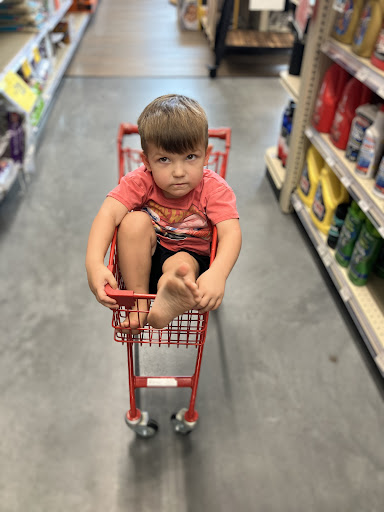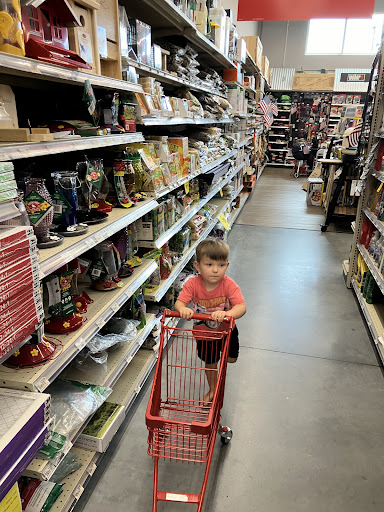Open up Perfect Colors with Comparison Charts
Choosing the right paint color for your home can feel overwhelming. With so many shades and brands available, it’s easy to get lost. That’s where a paint color comparison chart becomes your best friend. It helps you see how different colors look together or find a similar shade from another brand.
Here’s how you can easily compare paint colors:
- Use Online Tools: Many tools let you compare colors side-by-side, helping you see their saturation and lightness differences. You can even find similar colors across various paint collections.
- Get Physical Samples: Order small paint samples or pick up color chips. This lets you see the actual color in your home.
- Test in Your Space: Apply paint samples to your wall. Observe them throughout the day under different natural and artificial lighting.
- Consider Surface Texture: A color can appear differently on a smooth cabinet versus a rough wall.
- Visit Lowcountry Ace: Our paint experts can offer personalized advice and help with color matching.
Paint color comparison charts are vital. They help you avoid costly mistakes and ensure your chosen colors create the perfect feel for your home. These tools access vast databases, including thousands of individual paint colors from major manufacturers. Some comparison charts even offer high accuracy for color replication, ensuring you find a true match.
The helpful team at Lowcountry Ace brings extensive knowledge in helping customers select the perfect hues for their projects. We understand the nuances of paint color comparison charts and how they impact your home’s aesthetic, ensuring you find colors that truly shine in your Charleston home.
Learn more about paint color comparison chart:
What is a Paint Color Comparison Chart and Why is it Essential?
Picture this: you’re standing in the paint aisle, surrounded by thousands of color swatches, feeling completely overwhelmed. Sound familiar? That’s exactly where a paint color comparison chart becomes your saving grace. Simply put, it’s a tool that lets you view different paint colors side-by-side, making it easier to spot subtle differences and find the perfect shade for your space.
Think of it as your personal color detective. Whether you’re working with a digital tool on your phone or holding physical paint chips in your hands, these charts help you evaluate colors methodically rather than guessing. You can compare how a soft blue looks next to a crisp white, or see if that “perfect” green actually clashes with your existing decor.
Avoiding costly mistakes is probably the biggest reason these charts are so essential. We’ve all heard those horror stories – someone picks a color that looks great in the store but turns their living room into something that resembles the inside of a lime. With comparison charts, you can spot potential issues before you’ve invested in gallons of paint and hours of labor.
But it goes beyond just avoiding disasters. These tools are fantastic for ensuring color harmony throughout your home. Maybe you want your kitchen to flow seamlessly into your dining room, or you’re trying to match a new accent wall to your favorite throw pillows. A good comparison chart lets you see how colors work together, creating that cohesive look that makes a house feel like a home.
Matching existing decor becomes so much simpler too. Got a beloved piece of furniture or artwork that you want to complement? Instead of holding up random paint chips and squinting, you can use comparison tools to find colors that truly improve what you already love about your space.
The scope of these tools is pretty impressive. Many vast color databases contain thousands of individual colors from major manufacturers. This means you’re not limited to just one brand’s offerings – you can explore options across different lines and price points to find exactly what works for your project and budget.
At Lowcountry Ace, we see how these tools transform the paint selection process for our James Island and Folly Beach neighbors every day. Instead of feeling stressed about color choices, our customers leave feeling confident and excited about their projects.
Want to dive deeper into finding your perfect color match? Check out our comprehensive guide on House Paint Color Matching.
Navigating Digital vs. Physical Paint Color Comparison Tools
When you’re hunting for the perfect paint color, you’ll find yourself choosing between two main paths: the digital world and the physical world. Each offers its own advantages, and knowing how to use both effectively is the secret to paint project success.
Digital tools bring incredible convenience right to your fingertips. With just a smartphone or computer, you can explore thousands of colors, compare them instantly, and even see how they might look in your own space. It’s like having a paint store in your pocket! These tools are perfect for those late-night browsing sessions when inspiration strikes.
Physical tools, however, give you something digital screens simply can’t: true accuracy. While digital tools are fantastic for getting started, there’s no substitute for seeing actual paint in your Charleston home under your unique lighting conditions. Think of it this way – you wouldn’t buy a car just from looking at photos online, right?
The Power of an Online Paint Color Comparison Chart
Online paint color comparison chart tools are like having a knowledgeable paint expert available 24/7. These digital powerhouses let you place colors side-by-side instantly, making it easy to spot the subtle differences in saturation and lightness that can make or break your color scheme.
One of the most impressive features is their ability to cross-reference colors across different brands and collections. Love a shade from one manufacturer but curious about alternatives? These tools can search through vast databases to find similar hues. This is especially helpful for finding the perfect paint available right here at Lowcountry Ace.
Using these tools is refreshingly straightforward. You simply enter the color name or code, select your first choice, then repeat the process for your second color. The tool does the heavy lifting, showing you how the colors compare in terms of warmth, brightness, and overall character.
But here’s where we need to pump the brakes a bit. Digital screens have their limitations. Your monitor settings, browser, and even the angle you’re viewing from can dramatically change how colors appear. That gorgeous sage green on your laptop might look completely different on your wall. Screen calibration varies wildly between devices, and lighting differences in your room will affect how you perceive colors on screen versus in reality.
This is why we always recommend using online tools as your starting point – a way to build your shortlist before moving to the crucial next step.
The Tried-and-True Method: Physical Charts and Samples
Nothing beats getting your hands on actual paint chips and fan decks. These physical tools have been helping homeowners make confident color choices for decades, and there’s a good reason they’re still around.
The real game-changer, though, is testing actual paint samples in your space. We can’t stress this enough – pick up those quart-sized samples or peel-and-stick swatches and get them on your walls! Paint a generous area, not just a tiny square. You need to see how the color builds up with multiple coats to truly understand its depth and richness.
Here’s where Charleston’s unique character comes into play. Our coastal light is bright and reflective, which can make colors appear lighter or more vibrant than they would elsewhere. That soft blue that looked perfect in the store might sing a completely different tune in your James Island home’s sun-drenched living room.
Natural versus artificial light makes a huge difference too. Observe your samples throughout the day – morning light, afternoon sun, and evening lamp light can each reveal different aspects of the same color. A gray that looks crisp and modern in daylight might appear warm and cozy under your dining room chandelier.
Don’t forget that paint finish affects color appearance dramatically. A matte finish absorbs light, making colors appear softer and more muted. A glossy finish reflects light, making the same color look richer and more intense. The surface texture matters too – that gorgeous blue will look different on a smooth cabinet versus a textured wall.
Want to dive deeper into how different finishes can transform your space? Our Paint Finishes Guide has all the details you need to make an informed choice.
How to Use Comparison Tools to Find Your Perfect Shade
Now that you understand the different types of paint color comparison chart tools available, let’s dive into the practical side of things. Finding your perfect shade doesn’t have to feel like searching for a needle in a haystack. With the right approach, you can confidently steer from initial inspiration to final color selection.
The key is knowing your goal from the start. Are you exploring completely new colors to refresh your space? Or are you trying to match something specific – perhaps that gorgeous blue from your favorite restaurant or the exact shade of green from your grandmother’s kitchen? Your approach will vary depending on your mission, but the tools remain your trusty companions either way.
Matching Colors Across Different Brands and Lines
Here’s a scenario we hear all the time: “I absolutely love this color, but it’s not available in the brand I want to use.” Sound familiar? This is exactly where paint color comparison charts become your best friend. Each paint manufacturer has their own unique formulas and color systems, but that doesn’t mean you’re stuck with just one option.
The beauty of modern color matching lies in its accuracy. Some advanced paint color comparison chart systems can achieve remarkable 98-99% color match accuracy for specific paint lines. This means you can fall in love with a shade from any brand and find an incredibly close equivalent in your preferred paint line.
The helpful team at Lowcountry Ace brings years of experience in color matching. We understand how different paint formulations can affect the final result, and we’re here to guide you through finding the perfect shade and finish for your project.
Finding Equivalents for Discontinued or Specialty Colors
There’s nothing quite like the heartbreak of finding your perfect paint color has been discontinued. We’ve seen customers come in with paint chips from projects completed years ago, hoping against hope that we can help them recreate that exact shade. The good news? We absolutely can help!
This challenge extends beyond just discontinued house paints. Maybe you’re trying to match a unique color from hobby paints, or perhaps you found inspiration in an unexpected place – like a piece of vintage pottery or a fabric swatch. The principle remains the same: finding a new color with matching undertones, lightness, and saturation.
The secret weapon here is having a physical sample. If you can bring us a paint chip, a small piece of painted trim, or even an item painted in your desired color, our color matching technology can help. We can analyze your sample to find a close match from our available paint lines.
Common Pitfalls and Important Considerations
Even with the best paint color comparison chart at your fingertips, there are some sneaky challenges that can trip you up. Don’t worry – we’ve seen it all at Lowcountry Ace, and knowing what to watch for will save you from any color catastrophes!
The biggest surprise for many homeowners? Undertones. That gorgeous gray you fell in love with might have a secret blue personality that only shows up once it’s on your wall. Or that “perfect” white could reveal green hints under your kitchen’s fluorescent lights. Every color has an underlying hue hiding beneath the surface, and these undertones can make or break your room’s harmony.
Light Reflectance Value (LRV) is another game-changer that often gets overlooked. This number tells you how much light your chosen color bounces back into the room. A high LRV means your space will feel brighter and more open, while a low LRV creates that cozy, intimate vibe. If you’re working with a room that doesn’t get much natural light, understanding LRV can help you avoid choosing a color that makes the space feel like a cave.
Here’s where things get really interesting: paint sheen can completely transform how your color appears. The same shade in a matte finish will look soft and understated, while that exact same color in a glossy finish will appear richer and more vibrant. It’s like the difference between a whisper and a shout – same message, totally different impact.
Don’t forget about surface texture either. Your smooth drywall will show off a color differently than textured plaster or wood siding. Those bumps and grooves create tiny shadows that can make your color appear darker or more complex than expected. This is especially important here in Charleston, where many of our beautiful historic homes have unique wall textures that add character.
Speaking of our lovely Charleston area, our coastal climate brings its own considerations. The bright, often humid light that filters through our James Island and Folly Beach homes can make colors appear more saturated and lively than they might elsewhere. That soft blue might look more electric than expected, or your chosen beige could seem surprisingly golden. This is why the helpful team at Lowcountry Ace always recommends testing your colors in your actual space throughout different times of day.
The moral of the story? Your paint color comparison chart is a fantastic starting point, but your home’s unique personality – its light, textures, and atmosphere – will have the final say in how your chosen color truly looks.
Frequently Asked Questions about Paint Color Comparison
We get so many wonderful questions from our customers about paint color comparison chart tools and color matching. Let’s explore the most common ones we hear at Lowcountry Ace!
Can I get a perfect color match between different paint brands?
Here’s the honest truth: while modern color-matching technology can achieve incredibly close matches, getting a perfect color match between different paint brands is like trying to perfectly match two different recipes for chocolate chip cookies. They might taste amazing and look similar, but each baker has their own secret ingredients!
Each paint manufacturer uses its own unique blend of pigments and base paints, which naturally leads to subtle variations. Even when colors appear identical on a comparison chart, you might notice slight differences once they’re on your wall. The finish impact also plays a role here – a color that matches perfectly in matte might look slightly different when you compare it to another brand’s satin finish.
While color matching can be very accurate, we always recommend the golden rule: always test a sample of the matched color in your actual space before buying gallons of paint. It’s a small step that can save you from any surprises later.
How accurate is an online paint color comparison chart?
Online paint color comparison chart tools are fantastic as an excellent starting point for your color trip! They’re perfect for those cozy evenings when you want to explore possibilities from your couch, compare colors side-by-side, and build your shortlist of favorites.
But here’s where it gets interesting: there’s always a difference between digital representation vs. reality. Your computer monitor, tablet, or phone screen can only do so much. Screen settings like brightness, color temperature, and even the angle you’re viewing from can make a navy blue look like midnight black or a warm beige appear cool and gray.
Think of online charts as your color compass – they’ll point you in the right direction, but they shouldn’t be your final destination. The helpful team at Lowcountry Ace always recommends using these digital tools to narrow down your choices, then moving to physical samples for that crucial final verification with physical samples.
What’s the best way to test a paint color before committing?
This might be the most important question of all! The best approach combines patience with smart testing techniques, and we’ve seen it save countless customers from color regret.
Start with large swatches – don’t rely on those tiny paint chips that are smaller than a business card. Get quart-sized paint samples or large peel-and-stick samples of your top contenders. Your eyes need more color information to make a confident decision.
Try painting on poster board instead of directly on your walls. Paint two solid coats on large white poster boards, which gives you the flexibility of moving samples around a room. You can test how the color looks on different walls, near windows, or in darker corners.
The magic happens when you start observing in different light throughout the day. That gorgeous sage green might look perfect in morning sunlight streaming through your James Island home’s windows, but appear completely different under your evening table lamps. Day vs. night comparisons are crucial – we’ve seen colors that look crisp and clean during the day turn muddy or flat under artificial lighting.
Here’s a pro tip from our paint experts: limit yourself to testing 3-5 colors maximum. Testing too many creates “color fatigue,” making every shade start to look the same. Trust us, your decision-making will be much clearer with a focused selection!
Your Perfect Color Awaits
Finding your dream paint color is like finding the perfect recipe – it takes the right ingredients, a bit of patience, and the confidence to trust the process. With everything we’ve explored together, you now have a clear roadmap to steer color selection with ease and excitement.
The key to success lies in combining the power of digital exploration with the reliability of physical testing. Start your journey with an online paint color comparison chart to spark inspiration and narrow down your favorites. These digital tools are fantastic for exploring thousands of colors, finding cross-brand matches, and getting a sense of what appeals to you. But remember, the magic truly happens when you bring those colors into your actual space.
Physical sampling is where your color dreams become reality. There’s simply no substitute for seeing how a shade behaves under your unique lighting conditions, against your existing furniture, and throughout the changing hours of a Charleston day. Take the time to observe your samples in morning light streaming through your windows, under afternoon sun, and in the cozy glow of evening lamps. This careful observation ensures you’ll love your choice long after the paint brush is put away.
Making this process enjoyable is what sets a successful paint project apart from a stressful one. Don’t rush the decision – savor the exploration! Each step, from browsing online charts to testing samples on your walls, brings you closer to creating a space that truly reflects your personality and style.
The helpful team at Lowcountry Ace is here to make your color journey as smooth as possible. We understand that choosing paint can feel overwhelming, which is why we’re committed to providing expert guidance every step of the way. Whether you need help interpreting a paint color comparison chart, finding the perfect shade, or matching a beloved discontinued color, our knowledge and color matching technology are at your service.
Your perfect color is out there waiting to transform your James Island or Folly Beach home into something truly special. With the right tools, a bit of patience, and our expert support, you’ll soon be enjoying walls that make you smile every time you walk into the room.
Ready to turn your color vision into reality? Visit us and let our team help you create the home you’ve always dreamed of.
Lowcountry Ace Hardware: Your one-stop shop for home improvement. We offer quality products from trusted brands and expert advice from our experienced staff. Located on James Island, visit us for tools, hardware, fishing gear, power tools, building materials, grills & smokers, electrical and plumbing supplies, and more.

















